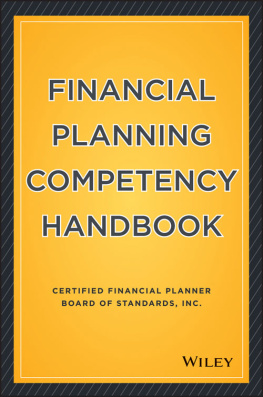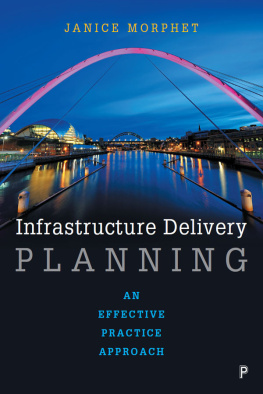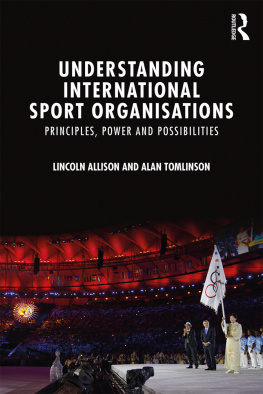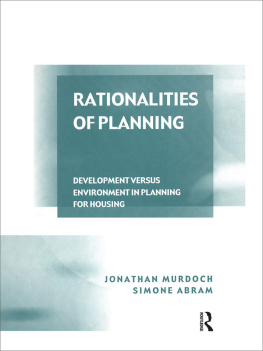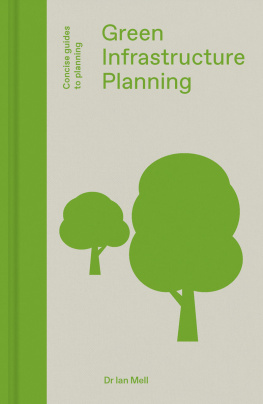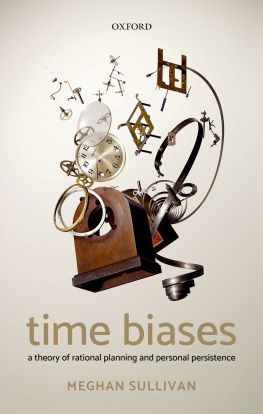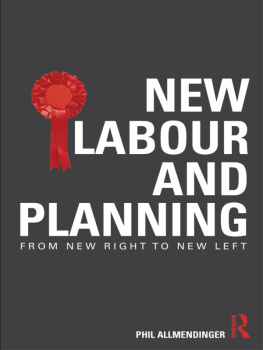First published 2000 by Ashgate Publishing
Reissued 2018 by Routledge
2 Park Square, Milton Park, Abingdon, Oxon OX14 4RN
711 Third Avenue, New York, NY 10017, USA
Routledge is an imprint of the Taylor & Francis Group, an informa business
Copyright Johan Woltjer 2000
All rights reserved. No part of this book may be reprinted or reproduced or utilised in any form or by any electronic, mechanical, or other means, now known or hereafter invented, including photocopying and recording, or in any information storage or retrieval system, without permission in writing from the publishers.
Notice:
Product or corporate names may be trademarks or registered trademarks, and are used only for identification and explanation without intent to infringe.
Publishers Note
The publisher has gone to great lengths to ensure the quality of this reprint but points out that some imperfections in the original copies may be apparent.
Disclaimer
The publisher has made every effort to trace copyright holders and welcomes correspondence from those they have been unable to contact.
A Library of Congress record exists under LC control number: 00134009
ISBN 13: 978-1-138-72883-7 (hbk)
ISBN 13: 978-1-315-19037-2 (ebk)
This book provides a new standpoint on communicative, participatory planning called consensus planning. Consensus planning is proposed here not only to include process-related quality demands such as transparency and legitimacy, but also specifically to include, and not reject, substantive values and expert knowledge in planning. The consensus-planning approach repositions communicative planning by applying a variety of theoretical views based on topics like democracy, co-operative behaviour, negotiating, and persuasion, to empirical evidence. This study moves beyond communicative planning theory to practical application by placing the importance of context and contingency at the forefront of the discussion. It also presents consensus planning as complementary to rather than a substitute for conventional and rational planning modes.
The communicative planning approach is an intensively discussed topic amongst western planning theorists and practitioners today. The discussion also takes place in the Netherlands, where consensus-based decision making is part of the national heritage. The book explores recent Dutch infrastructure development experiences and concludes that communicative planning theory does not offer uniform relevance for the challenges that planning practitioners face. Building on these experiences, the book proposes the concept of consensus planning as valuable in a complementary, normalised, and contingent way. Consensus planning, in other words, has diverse practical appearances and sometimes may not exist or be desirable.
The research activities I pursued during the making of this book show characteristics of a voyage of discovery through the sense and nonsense of consensus. The building in which the Faculty of Spatial Sciences at the University of Groningen is accommodated periodically felt like a spaceship from which I had a variety of perspectives on the research topic. Fortunately, the colleagues in the spaceship in many ways assisted me to distinguish between sense and nonsense and to put the perspectives into papers, reports and for this book into a coherent discussion.
First of all, I would like to thank Henk Voogd. When discussing the study, Henk repeatedly said: Remember, you stand on the shoulders of giants. During the process, I found out Henk is, in fact, the most gigantic of giants himself. He stimulated me and provided me with the necessary confidence. In doing so, he has been magnificent in creating opportunities and supporting initiatives to ensure a stimulating research environment. At essential moments, Henk provided me with observations which decisively refined and directed the study. In particular is founded on some of these observations. No doubt most importantly, however, I benefited by Henks good nose for the innovations and traditions in the field. This is an essential requirement to complete research that extends over several years.
Between 1994 and 1999, I was a member of a group of researchers at the Faculty of Spatial Sciences, University of Groningen. I would like to express special gratitude to Paul Ike, a member of this group, who played such a preponderant role in strengthening my academic interests. I would also like to thank my other wonderful planning colleagues for all the inspiring hours we spent together in particular Jos Arts, Andr Bus, Femke Niekerk, Gert de Roo, Marius Schwartz, Marieke Seip, and my office mate Gke Kuiper. I also do not want to forget all the other excellent colleagues at the planning, geography and the demography departments and the supporting and administrative personnel of the Faculty. I had a marvellous time working together with them, going on excursions, conferencing, mud walking, and sharing drinks. Thank you all!
I would also like to acknowledge the group of planners at the Netherlands Organisation for Applied Scientific Research (TNO) in Delft, for allowing me, among other things, to have a closer look at strategic and interactive plan making. In particular Hans van der Cammen, Mike Duyn, Theo Reijs, and Frans van der Schoot come to mind. I also render my thanks to the people at the Ministry of Transport, Water Management and Public Works and participants at the Planning and Evaluation workshop and the congresses of the Association of European Schools of Planning (AESOP). They all helped me to understand and develop a comprehensive view on the field. Most of all, I was grateful to receive suggestions and most valuable remarks on earlier papers and an earlier version of this book from Ernest Alexander, Hans Bressers, Patsy Healey, Gerard Linden and Don Miller.
Furthermore, I would like to thank all project managers within the Ministry of Transport and other organisations who, both verbally and in writing, provided me with so many insights into planning practice. Also, I would like to thank Hans Cnossen and Inge Willemsen who both laid a substantial basis for of this book appreciatively draws from a research project conducted by Erwin Bezembinder, Hans Cnossen, Martijn Ebben, Fieke van Kats and Arnout Schoemakers.
Also, I would like to express my gratitude towards all those involved otherwise. John van Tiel did a wonderful job in improving my use of the English language. Tamara Kaspers drew beautiful maps. My gratitude also includes my new colleagues at the Centre for Clean Technology and Environmental Policy (CSTM) of the University of Twente, the Netherlands, with whom it is marvellous to use some of the findings of the book and expand my practical and scientific knowledge.
Furthermore, I would like to thank my friends and everyone who helped me put on sunglasses at crucial moments so I could see what I was doing. Jaap, Jet and Gerrie were formidable in showing interest, reflecting on the topic in a most sensible way and giving unconditional support. I thank them for doing this as a matter of course and for ensuring I was myself throughout. Most important of all, I would like to express my deepest gratitude to Melinda who continually provided the enchantment to the research view. Without Melindas love and scientific understanding, the process of making this book would not have proceeded as well as it did. She has strengthened the book and me in ways far beyond the grasp of this preface.





